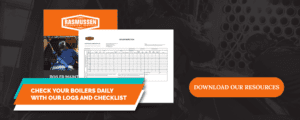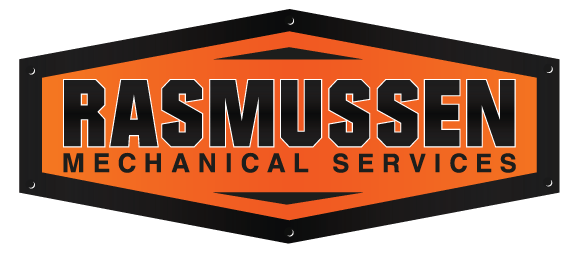Every jurisdiction in North America requires periodic boiler inspections to protect people, property, and insurers. Annual internal and external reviews—plus mid-year external checks in many plants—catch problems before they escalate. A disciplined preparation routine keeps the inspector’s visit short, uncovers trouble spots early, and gets your steam back online fast.
Know Your Boiler Inspection Type and Timeline
Before you begin preparing for an inspection, it’s important to understand what type of inspection you’re facing and how much downtime to expect.
Internal inspections are the most involved and are typically required once per year in most states. These inspections require the boiler to be completely shut down, cooled, drained, and opened so the inspector can physically enter the drum or furnace and examine the internal surfaces. (For high pressure boiler internal inspections, this process is crucial to ensure compliance with safety standards and regulatory requirements.) Cooling alone can take 24 to 48 hours, so scheduling is critical.
External (or in-service) inspections are less disruptive and usually occur mid-year or quarterly. These are performed while the boiler is operating and involve visual and functional checks without any disassembly, meaning there’s no downtime required.
Pro tip from the field: A clean, fully opened boiler lets the inspector finish in a single visit. That can save you an extra day of outage and another service call.
Preparing for Boiler Inspections —At-a-Glance Checklist
 Proper preparation is critical for a successful boiler inspection. If the boiler isn’t fully opened or safely isolated, the inspector may refuse to proceed until everything is in order—which can cost you valuable downtime.
Proper preparation is critical for a successful boiler inspection. If the boiler isn’t fully opened or safely isolated, the inspector may refuse to proceed until everything is in order—which can cost you valuable downtime.
For internal inspections, always begin by shutting the boiler down according to the manufacturer’s recommended procedures. Once offline, isolate all fuel, steam, water, and electrical systems by locking out and tagging the corresponding valves, ignition circuits, and disconnects. Allow the boiler to cool completely—a process that may take 24 to 48 hours depending on its size and design.
After the boiler has cooled, open all vent and drain lines to relieve any remaining pressure and begin draining the vessel. Remove handhole and manway covers, washout plugs, and inspection ports on the water column. It’s also important to open up any low-water cut-off chambers and pull plugs from cross tees to allow for full visual inspection of internal piping.
Once the boiler is fully drained, flush out loose scale and sediment from the inside surfaces. Some inspectors prefer to see these deposits left in place to better evaluate boiler condition, so it’s a good idea to confirm their preference before flushing.
On the fireside, open all access doors or panels, front and rear, and remove soot or ash buildup from the combustion surfaces and grates (if present). Again, check with your inspector—some may prefer to see the condition of the furnace area before it’s cleaned.
Finally, have new gaskets on hand for all handholes, manways, and other access points. Gaskets should never be reused; a fresh seal helps prevent leaks and ensures safe startup after the inspection is complete.
Walkthrough—What the Inspector Expects to See
During an internal inspection, the inspector will look for clean, intact surfaces throughout the boiler. The shell, drums, and tube sheets should be free of bulges, cracks, or signs of corrosion loss. Tube ends must be tight and free from scale buildup. Internal surfaces should not show signs of hard scale—anything thicker than 1/32 of an inch can cut thermal efficiency by more than 7%. An inspection report documenting these findings is crucial for ensuring safety and compliance with regulatory requirements.
 The inspector will also verify that all piping to water-level controls is open and unobstructed, often by shining a flashlight through each cross-tee or column plug. Refractory should be solid and free from cracks or voids. Relief valves, controls, and associated vessels must be properly stamped, within their certification dates, and correctly sized for the application. If anything obscures their view—whether it’s mud on a tube sheet, a plugged gauge cock, or soot-lined tubes—the inspector will likely pause the process, mark it as incomplete, and reschedule. Each delay adds unnecessary downtime to your boiler outage.
The inspector will also verify that all piping to water-level controls is open and unobstructed, often by shining a flashlight through each cross-tee or column plug. Refractory should be solid and free from cracks or voids. Relief valves, controls, and associated vessels must be properly stamped, within their certification dates, and correctly sized for the application. If anything obscures their view—whether it’s mud on a tube sheet, a plugged gauge cock, or soot-lined tubes—the inspector will likely pause the process, mark it as incomplete, and reschedule. Each delay adds unnecessary downtime to your boiler outage.
Closing Up and Re-Start
Once the inspection is complete and repairs are finished, it’s time to reassemble the boiler and bring it back online. Start by dressing all gasket surfaces—use a wire brush and solvent to clean them thoroughly, making sure there are no deep nicks or pitting that could compromise the seal. Install new gaskets on every opening you’ve broken, torquing bolts in a star pattern to ensure even compression. For fire-side doors, you’ll typically need high-temperature rope along with sealant to create a proper seal under heat.
As you begin refilling the boiler, do it slowly with treated water. Once full, perform a cold leak check. Watch for weeps—slow drips or slight leaks at gasketed joints or flanges—and tighten any connections as needed before pressure is applied. These minor leaks can worsen once the boiler is hot, so catching them early helps avoid a shutdown later.
After confirming the system is sealed, warm the boiler gradually, following recommended heat-up rates. Run through all safety checks, including low-water cutoffs, flame safeguards, and pressure relief valves to make sure everything operates as it should. Verify the functionality of all safety devices during this process to prevent hazards and maintain compliance with safety standards. Before you update your maintenance log, refer to this boiler maintenance checklist for comprehensive maintenance guidance. Finally, update your maintenance log with the inspection date, any repairs made, test results, and the name of the person who signed off. This documentation not only keeps you compliant—it also sets a clean foundation for the next inspection cycle. Ensure that every inspection performed is thoroughly documented to meet regulatory requirements and to identify potential issues before they escalate.
Common Inspection Issues—And How to Avoid Them
A handful of trouble-spots turn up on inspection reports year after year. On the water side, thick lime-or-iron scale often coats tube surfaces when total-dissolved-solids and alkalinity haven’t been held in check. Routine surface and bottom blowdowns, coupled with a treatment program that keeps TDS and pH within the manufacturer’s band, stop that mineral layer from acting like insulation and driving up fuel costs. Just above the normal waterline, inspectors also see pitting in the tube sheet when oxygen sneaks past a sluggish deaerator vent. Maintaining a healthy sulfite residual and periodically confirming that the vent is actually sparging off non-condensable gases keeps corrosive oxygen away from steel.
On the fire side, soot-packed tubes usually point to a burner that hasn’t been tuned or a draft system that’s out of balance. A semi-annual combustion analysis—along with a quick look at the fan wheel and stack damper—restores clean flame and free heat flow.
Finally, controls deserve attention. A low-water-cutoff float that drops lazily is almost always glued in place by sediment inside its column. Column blowdowns, paired with a thorough chamber cleaning during the annual shutdown, ensures that float moves instantly when water level falls. It also ensures the boiler shuts off before damage occurs.
Frequently Asked Questions (FAQ)
How often is a boiler inspection required?
Most jurisdictions mandate a full internal inspection every 12 months and an external operating inspection at least every 6 months. Always confirm your state rules and insurance policy.
How long does it take to cool a boiler for inspection?
Plan on 24 – 48 hours for a firetube over 500 HP to drop to ambient temperature; large watertubes can take longer. Forced-draft fans hasten—but never shortcut—cool-down.
Can I leave the burner installed?
Only if the rear door gives a full view of the furnace and tube sheet. Otherwise, pull the burner to avoid an automatic re-inspection. Ensure your burner is working properly by considering the installation of flame sensors and safeguard controls. (Tip echoed in our shop-floor video.)
Do I have to replace every gasket?
Yes. Elastomers compress once; reusing them risks leaks that force an emergency shutdown.
Who is allowed to perform a boiler inspection?
A National Board–commissioned inspector or equivalent state-licensed professional. Plant personnel may assist but cannot sign the report. Inspectors certified by the national board of boiler and pressure vessel inspectors ensure thorough inspections and loss prevention.
Inspection Scheduling
Inspection scheduling is critical to ensuring that boilers and pressure vessels remain in compliance with safety regulations. The boiler inspection cycle runs from January 1 to December 31. All inspection reportsare due within 14 calendar days from the date the inspection is performed. Annual inspections are mandatory for H-stamped and E-stamped boilers, and it is essential to file inspection reports for these boilers promptly. Proper scheduling helps avoid lapses in compliance and ensures that any issues are addressed in a timely manner.
Property owners are responsible for hiring a licensed professional to conduct low-pressure boiler inspections. These inspections can only be performed by qualified installers licensed by the Department of Buildings or by an authorized boiler insurance company. Adhering to the national board inspection code and meeting jurisdictional requirements is crucial for maintaining compliance.
Low-Pressure Boiler Inspections
Low-pressure boilers, commonly used in residential buildings and mixed-use buildings, require annual inspections to ensure compliance with safety regulations. These inspections must be performed within the calendar year from January 1 to December 31.
During these inspections, inspectors check for compliance with safety standards and look for any signs of wear and tear or operational inefficiencies. Regular inspections help maintain the boiler’s performance and prevent potential issues from escalating into major problems.
High-Pressure Boiler Inspections
High-pressure boilers require more rigorous and frequent inspections due to the increased dangers associated with their operation. Large boilers, for example, should be inspected annually, with some organizations recommending an external inspection while under pressure halfway through the year.
Qualified installers licensed by relevant authorities are essential for conducting these inspections to ensure compliance with safety and efficiency standards. Regular inspections help maintain the safety and performance of high-pressure boilers, preventing potential hazards and costly repairs. A licensed professional can provide the expertise needed for these evaluations related to installation.
Final Thoughts—and a Quick Win for Your Next Audit
Boiler inspections play a critical role in maintaining safe, efficient operation and ensuring compliance with safety standards. Inspectors focus on structural integrity, looking for cracks, corrosion, erosion, and welding defects that could lead to catastrophic failures. Regular inspections help catch these issues early. For steam boilers and pressure vessels, inspections are key to identifying flaws before they become serious hazards.
Advanced tools like drones are increasingly used in commercial boiler inspections to access hard-to-reach areas without full disassembly. Whether using traditional methods or newer technologies, inspections should be conducted by licensed professionals on a regular schedule. Staying on top of maintenance, keeping a clear log, and preparing properly keeps your system compliant and improves performance.




